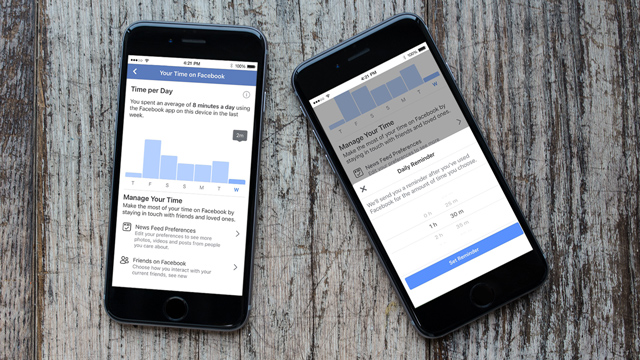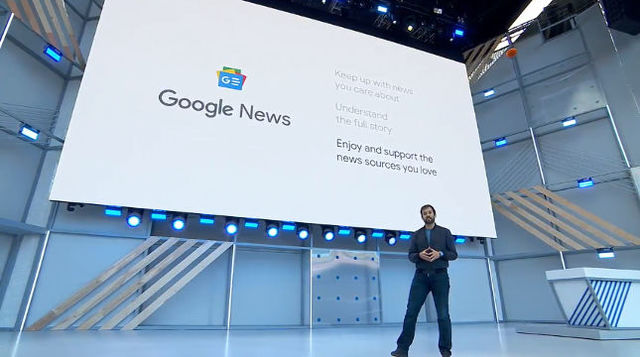
Key changes from social media platforms in 2018
We take a look back on the most interesting changes introduced in some of our frequently used platforms
MANILA, Philippines – Our favorite platforms have always been a work-in-progress. The companies behind them are always in the process of adding various improvements and fixes to address our wants and needs. The year has seen a number of these platforms evolve. Some got much-needed makeovers while others added much-requested features. We take a look at 6 of the most interesting changes below:
Snapchat redesigns controversial redesign
Snapchat’s userbase took quite a hit when it introduced an overhauled app in late 2017. It was confirmed months later that the platform lost 2% of its daily active users in just one quarter. A petition was even created and signed by over 1.2 million people to bring the old app back. The chief complaint: Stories from celebrities and famous personalities were separated from those that came from your friends.

SNAPCHAT. Photo by Robyn Beck/AFP
Despite the overwhelming feedback, Snapchat made it clear that they had no plans to reverse all the changes that came with the redesign – a stance they eventually dialed back on when their company growth lagged.
While Snapchat did not entirely bring everything from the old app back, it managed to find a middle ground that allowed it to bring the new and familiar together. Stories from celebrities and your friends, for instance, are back together in the Discover page. But they are kept separate in different sliders. The update also moved Stories from friends back to the ride of the app and put “Snaps” and “Chats” back in reverse chronological order.
Twitter and Instagram de-emphasize follower count
In an effort to facilitate more “meaningful” and authentic” interactions, Twitter and Instagram have in the past year redesigned profile pages to de-emphasize follower count.
According to The Verge, Twitter CEO, Jack Dorsey made it clear in the past that he believes that follower count incentivizes users to post content that could go viral which in turn diminishes the quality of discourse on the platform. This pushed Twitter to decrease the font size of the follower count so that it’s not as noticeable as it was before.
Instagram seems to share Dorsey’s view of the feature as they too have decreased the follower count font size and moved it below the user’s profile picture, instead of the top where it originally was before the redesign.
The image-sharing service also announced that it began removing fake followers, likes, and comments from accounts that used third-party applications to generate them.
Time well-spent
It’s been stated time and time again by various studies that too much social media may not be good for anyone. And social media platforms appear to be well-aware of this which is why in 2018 they have made it a lot easier for you to limit your usage with the addition of new “time well-spent” tools.
Other Stories
LIVE: U.S. House of Representatives hearing with Facebook CEO Mark Zuckerberg on data privacy
Tune in to the hearing on Wednesday, April 11, at 10 pm, Manila time
Facebook CEO’s Indonesia visit all over Twitter
Mark Zuckerberg visited Borobudur Temple, met with Jokowi, went to a traditional market, and more
LIVE: U.S. Senate panel hearing with Facebook CEO Mark Zuckerberg on data privacy
Tune in to the joint hearing on April 11, 2:15 am, Manila time
Facebook in November rolled out the “Your Time on Facebook” feature that shows you a chart with your usage statistics broken down in minutes, hours, and average time spent per day. Instagram, which Facebook owns, also added a similar feature called “Your Activity.”

Photo from Facebook
You can, meanwhile, set a daily time limit for your usage where the app sends you a reminder when you’ve reached it. But because it’s only a reminder, it can still be ignored. There are no features to have the app lock you out for the day, for instance, which means a bit of self-control and restraint is still required from users’ end.
AI-powered Google News
Information platforms fought an uphill battle against the spread of fake news this past year. While there are no signs of this battle ending anytime soon, Google may have gained a competitive edge when it announced it will use artificial intelligence (AI) in Google News to combat disinformation and give users “personalized” news.

GOOGLE NEWS. Screenshot from livestream
The Google News app was tweaked to accommodate the change as it is now broken into four different sections. The first section is called “For you” and contains content that the AI thinks you may want to read.
The second is called “Headlines” and includes a mix of the latest news across different sections. In essence, it contains what the AI thinks you should read. It also contains the Full Coverage feature which pulls content from different news sources to create an easy-to-understand timeline of events for more complex stories.
Then there is “Favorites” which can save stories and track your favorite news sources.
Last is “Newsstand” which allows you to subscribe to news organizations that have content behind a paywall.
Although Google insisted that these efforts were to help news organizations, specially those who have subscription-based business models, critics and skeptics were quick to point out that the AI can never replace a human editor.
Instagram mute feature
There was quite a demand for a mute feature for photos and videos on Instagram ever since a similar feature was introduced for Instagram Stories back in 2017. And in 2018, it was finally added.

The long-overdue feature allows you to mute a person’s posts, stories, or even both and the best part is, they won’t know they’ve been muted. Of course, you can still unmute them anytime you want when you visit their profile.
Whether you just want to clean your feed or you don’t want to see posts from someone you can’t unfollow, say a family member, the mute feature may definitely prove useful.
Facebook option to appeal taken down pages
Facebook CEO, Mark Zuckerberg, in an interview with Vox, said that he’s open to let users independently appeal to the Facebook moderation team if their content gets flagged or taken down for community policy violations. The social media company previously allowed users to request Facebook’s team to review a post they believe was wrongly taken down. But unlike reviews where Facebook’s moderation team ultimately decides whether or not to restore a post, an appeal gives power to other Facebook users.
The process would operate similar to a court, as likened by Zuckerberg, where it would ask randomly selected users whether they think the content violates Facebook’s policies. He believes that the views of those who work at Facebook may not always reflect those of the community so it would be good to have a second opinion.
The social media platform currently only allows appeals for content that have been removed due to copyright violation. However, given that Facebook already routinely surveys users on different aspects of the platform, this new option to appeal taken down pages doesn’t sound too far off. – Rappler.com
Source: https://www.rappler.com/technology/features/219541-key-changes-social-media-platforms-yearend-2018
About the author



